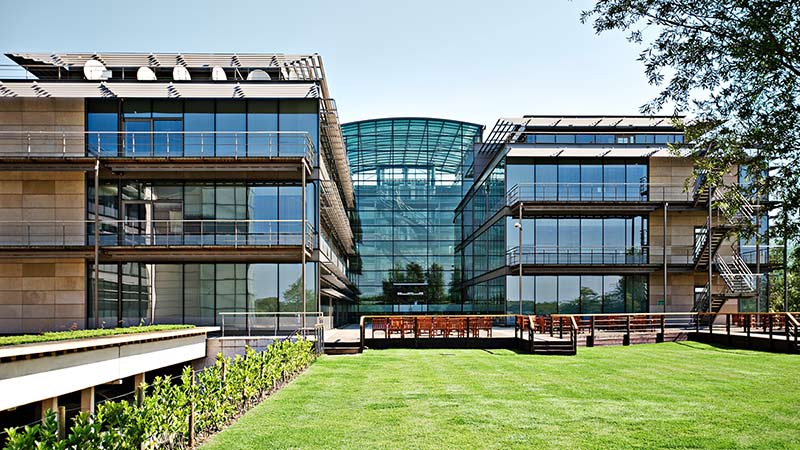This is a guest post by Adam MacHale,Vice President - Service Provider, EMEAR
The pandemic significantly altered connectivity demands. As we navigate what we hope is a post-pandemic world, connectivity will be central to driving growth and building resilience for future global challenges. Today, access to broadband is critical to driving business success, economic growth, and social opportunities. And with everything from hybrid work and the internet of things to artificial intelligence and immersive experiences accelerating, the demand on service providers promises to grow greatly in the coming years.
At the same time, I see great opportunity for Service Providers — not just to meet that demand, but to create new, secure experiences and opportunities in underserved regions, while lowering both cost and energy demands.
But where do we stand on broadband connectivity today and how ready are we for that more inclusive digital future? Cisco’s 2022 Global Broadband Index sought answers. Built around a survey of 60,000 workers in 30 countries, the study shows that there is a high awareness of broadband’s importance — for hybrid work and so much else.
For example, while 75 percent of respondents across Europe, Middle East, Africa, and Russia (EMEAR) believe everyone should be able to connect securely to fast and reliable internet, regardless of their location, another 72 percent think broadband services need to improve dramatically to enable them to work from anywhere, successfully.
Connecting the unconnected
Today, three billion people across the planet remain unconnected or underserved. And while broadband services vary widely from country to country, even in developed countries there are too many communities suffering from poor or no coverage. Cisco’s survey highlighted particular concerns around the urban/rural divide in broadband coverage.
The good news is that there is a lot of awareness around closing these gaps. For example, the Broadband Index showed that 71 percent of respondents believed governments should accelerate plans to ensure high-speed and reliable internet is available to everyone.
It’s important that governments work closely with service providers and technology vendors to create new solutions. That’s why I applaud efforts like the European Compass Project, to ensure that every home should have at least a gigabit connection by 2025.
Shaping a green future
I’m optimistic that new innovations and initiatives promise to meet much of the increasing demand. This represents an enormous opportunity for service providers. And Cisco can help, with offerings such as SD-WAN, routed-optical networking, security, automation and Silicon One, all of which are greatly increasing capabilities.
These technologies simplify the layers of infrastructure complexity that have so long confounded teams, while significantly cutting power demands. Also, given the energy demands of service providers, the Silicon One chip and the hardware it powers can have a huge environmental impact — with double the performance at half the power requirement. Today, those benefits are filtering down from our mass-scale infrastructure to our enterprise-grade products.
Cisco has set its own ambitious goals for eliminating Scope 1 and Scope 2 greenhouse gases by 2025, and Scope 3 by 2040. I’m excited to see the extent to which our technologies — along with our circular economy practices and other initiatives — will help enable organizations to meet similar targets. Currently, 3 percent of all carbon dioxide emissions are generated by the telecom sector, and if the data traffic growth continues, that could be 14 percent by 2040 unless sustainability measures are taken (Boston Consulting Group). We simply cannot allow that to happen.
Lowering the cost barrier to opportunity
We’ve seen the kinds of efficiencies and opportunities that high-speed broadband brings to remote, often rural regions. But in Cisco’s survey, 69 percent of respondents believed that the high cost of internet was locking out lower-income families.
Cutting those costs is a complex challenge, but I believe we can make significant inroads.
Regulation needs to be handled carefully, so as not to slow innovation. But sometimes regulations can spur necessary changes. By strengthening partnerships between government, service providers, and technology vendors, and by optimizing and simplifying the network, we can help reduce cost points.
That’s why I’m excited about the coming years. For service providers, the goal should be nothing less than broadband connectivity for every home, everywhere — with viable speeds, manageable cost points, and dramatic cuts in energy demands.
We can do it by converging and simplifying network infrastructure, both optical and IP, while increasing capabilities in speed, bandwidth, and latency. If we change the way those networks are built, we can sow new opportunities around the world.
It’s a big transition, but I believe that with the will, the technology, and the cooperation, we can begin to make a difference within the next five years.
###



